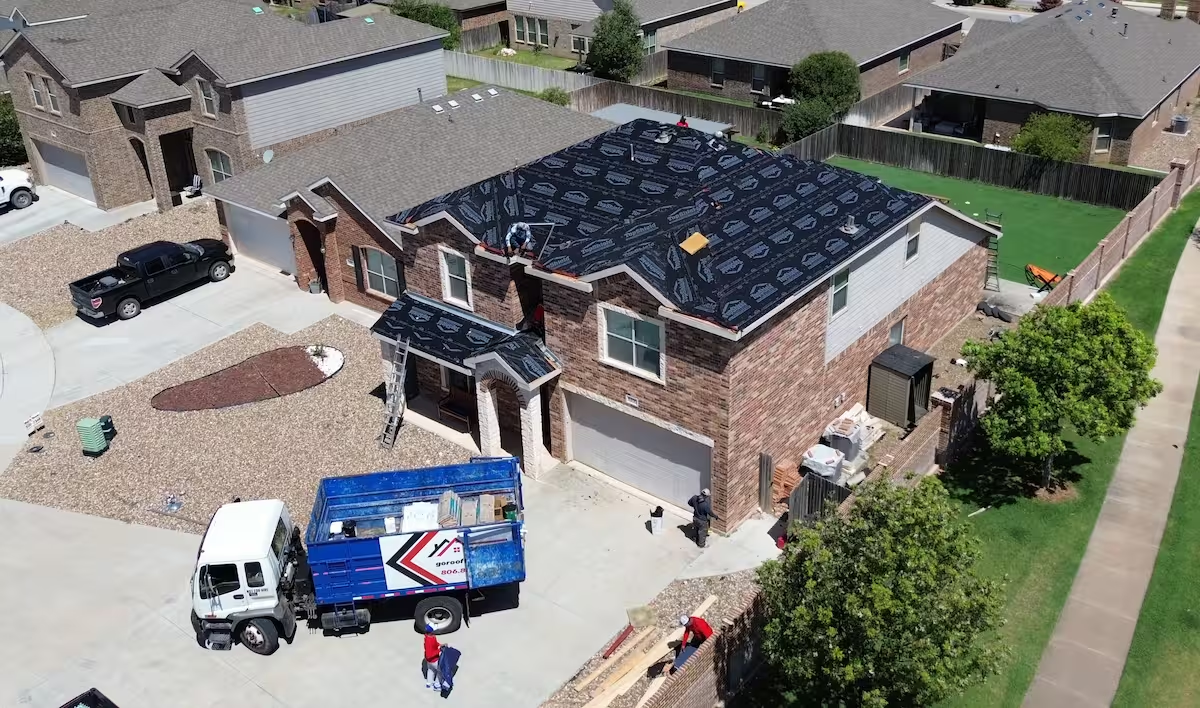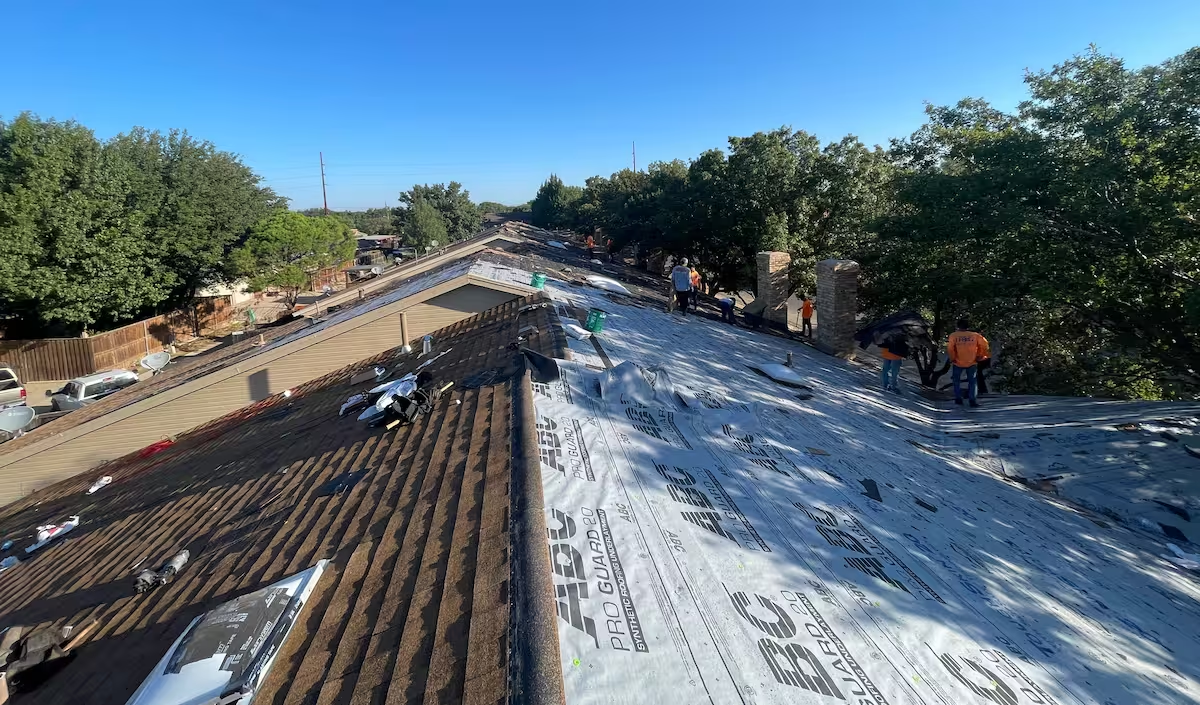Making the Right Roofing Material Choice
Selecting the appropriate roofing material represents one of the most important decisions for your home's protection, value, and aesthetic appeal. The right material choice can last 20-100+ years while providing optimal protection, energy efficiency, and return on investment for your specific situation.
Understanding these nine critical factors ensures you make an informed decision that balances performance, cost, durability, and style to meet your unique needs and preferences.
1. Climate and Weather Resistance
Your local climate represents the most crucial factor in roofing material selection, as different materials perform optimally under specific weather conditions. Climate-appropriate materials can extend roof life by decades while reducing maintenance costs and energy consumption.
Hot and Sunny Climates
- Light-colored metal roofing reflects solar heat and reduces cooling costs
- Clay tiles provide excellent thermal mass and UV resistance
- Cool roof shingles with reflective granules minimize heat absorption
- Avoid dark materials that absorb excessive heat and accelerate deterioration
Cold and Snowy Regions
Areas with heavy snow loads require materials that can handle weight and prevent ice dam formation. Metal roofing sheds snow effectively, while proper underlayment and ventilation prevent freeze-thaw damage regardless of material choice.
High Wind Areas
Hurricane and tornado-prone regions benefit from impact-resistant materials with high wind resistance ratings. Consider upgraded fastening systems and materials specifically tested for extreme weather conditions.
2. Durability and Lifespan
Material lifespan directly impacts long-term value and replacement costs. Longer-lasting materials often provide better value despite higher upfront costs, especially when considering maintenance and replacement expenses.
- Slate and clay tiles: 50-100+ years with minimal maintenance
- Metal roofing: 40-70 years with excellent durability
- Architectural shingles: 25-30 years with proper installation
- Basic asphalt shingles: 15-25 years depending on quality and conditions
Durability Factors
Consider resistance to hail, wind, UV exposure, thermal cycling, and moisture infiltration when evaluating durability. Impact-resistant ratings and wind resistance certifications provide objective performance measures.
3. Initial Cost and Budget Considerations
Upfront material and installation costs vary dramatically between roofing options. Budget considerations should include both immediate and long-term costs to determine true value over the material's expected lifespan.
Cost Comparison Ranges
- Basic asphalt shingles: $3-5 per square foot installed
- Architectural shingles: $4-7 per square foot installed
- Metal roofing: $6-16 per square foot installed
- Clay tiles: $8-15 per square foot installed
- Slate roofing: $12-25+ per square foot installed
Total Cost of Ownership
Factor in maintenance costs, energy savings, insurance discounts, and replacement frequency when comparing options. Premium materials often provide better long-term value through reduced lifecycle costs.
4. Energy Efficiency and Performance
Energy-efficient roofing materials can significantly reduce heating and cooling costs while improving indoor comfort. Cool roofing technologies can reduce energy costs by 10-30% in appropriate climates.
Energy Performance Features
- Solar reflectance ratings for hot climate performance
- Thermal emittance properties for heat dissipation
- Insulation values and thermal mass characteristics
- Ventilation compatibility for optimal airflow
Energy Star Certification
Look for Energy Star certified materials that meet strict performance criteria for energy efficiency. Many utility companies offer rebates for qualifying energy-efficient roofing installations.
5. Architectural Style and Aesthetic Appeal
Roofing material should complement your home's architectural style while enhancing curb appeal and property value. Appropriate material choice can increase home value by 3-5% while inappropriate choices may detract from marketability.
Style Compatibility
- Traditional homes: Clay tiles, slate, or architectural shingles
- Modern designs: Standing seam metal or sleek tile profiles
- Colonial styles: Cedar shakes or premium shingles
- Mediterranean: Clay tiles in warm earth tones
Color and Texture Options
Consider available colors, textures, and profiles that complement your home's exterior while meeting performance requirements. Light colors reduce heat absorption while dark colors provide dramatic contrast and may help with snow melting.
"The best roofing material balances performance, durability, aesthetics, and budget to meet your specific needs. There's no universal 'best' choice – only the right choice for your unique situation."
6. Maintenance Requirements
Different materials require varying levels of ongoing maintenance to maintain optimal performance and appearance. Low-maintenance materials save time and money over their lifespan while providing consistent protection.
Maintenance Levels by Material
- Metal roofing: Minimal maintenance, occasional cleaning
- Clay tiles: Low maintenance, occasional tile replacement
- Asphalt shingles: Moderate maintenance, periodic repairs
- Wood shakes: High maintenance, regular treatment required
Maintenance Considerations
Factor in cleaning requirements, repair complexity, availability of replacement materials, and professional service needs when evaluating maintenance demands.
7. Local Building Codes and HOA Requirements
Building codes and homeowner association regulations may restrict material choices or require specific performance ratings. Verify compliance before making final material decisions to avoid costly changes or violations.
Common Restrictions
- Fire resistance ratings in wildfire-prone areas
- Wind resistance requirements in hurricane zones
- Historic district preservation guidelines
- HOA aesthetic and material standards
Permit and Approval Process
Some materials or colors may require special approval processes. Research requirements early in the planning process to avoid delays or complications.
8. Installation Complexity and Contractor Availability
Installation complexity affects both cost and contractor selection, as specialized materials require experienced professionals. Proper installation is crucial for optimal performance regardless of material quality.
Installation Considerations
- Contractor experience with specific materials
- Specialized tools and equipment requirements
- Installation time and weather dependencies
- Warranty coverage and professional certifications
Finding Qualified Contractors
Premium materials often require certified installers to maintain warranty coverage. Verify contractor credentials and experience with your chosen material before proceeding.
9. Environmental Impact and Sustainability
Environmentally conscious homeowners increasingly consider sustainability factors in material selection. Sustainable materials can reduce environmental impact while potentially qualifying for green building incentives.
Sustainability Factors
- Recycled content in manufacturing processes
- End-of-life recyclability and disposal options
- Energy efficiency and carbon footprint reduction
- Local sourcing and transportation impacts
Green Building Certifications
Some materials contribute to LEED certification or other green building standards. Consider environmental certifications when sustainability is a priority.
Material Comparison Matrix
Use these factors to create a comparison matrix for your specific situation. Weight each factor based on your priorities to identify the optimal material choice for your home and budget.
Decision-Making Process
- Assess your climate and weather exposure
- Determine budget range for materials and installation
- Evaluate architectural compatibility and aesthetic preferences
- Research local codes and HOA requirements
- Consider long-term maintenance and energy implications
- Verify contractor availability and expertise
- Factor in sustainability goals and environmental impact
Professional Consultation Benefits
Experienced roofing professionals can help evaluate these factors for your specific situation and recommend optimal material choices. Professional guidance ensures informed decisions that balance all relevant factors for your unique needs.
Expert Assessment Value
- Local climate and condition expertise
- Material performance knowledge and experience
- Code compliance and permit assistance
- Installation quality and warranty support
Future-Proofing Your Investment
Consider future needs and changing conditions when selecting roofing materials. Climate change and evolving building standards may influence optimal material choices for long-term performance.
Future Considerations
Evaluate potential for solar panel installation, changing weather patterns, evolving energy codes, and technology improvements when making material decisions.
Conclusion
Choosing the right roofing material requires careful consideration of climate compatibility, durability, cost, energy efficiency, aesthetics, maintenance, codes, installation, and environmental impact. No single material excels in every category, making it essential to prioritize factors most important to your specific situation. Take time to research options thoroughly, consult with experienced professionals, and consider long-term implications beyond initial cost. The right material choice provides decades of reliable protection while enhancing your home's value, efficiency, and aesthetic appeal. Invest in quality materials and professional installation to ensure optimal performance and maximize your roofing investment for years to come.
.png)



